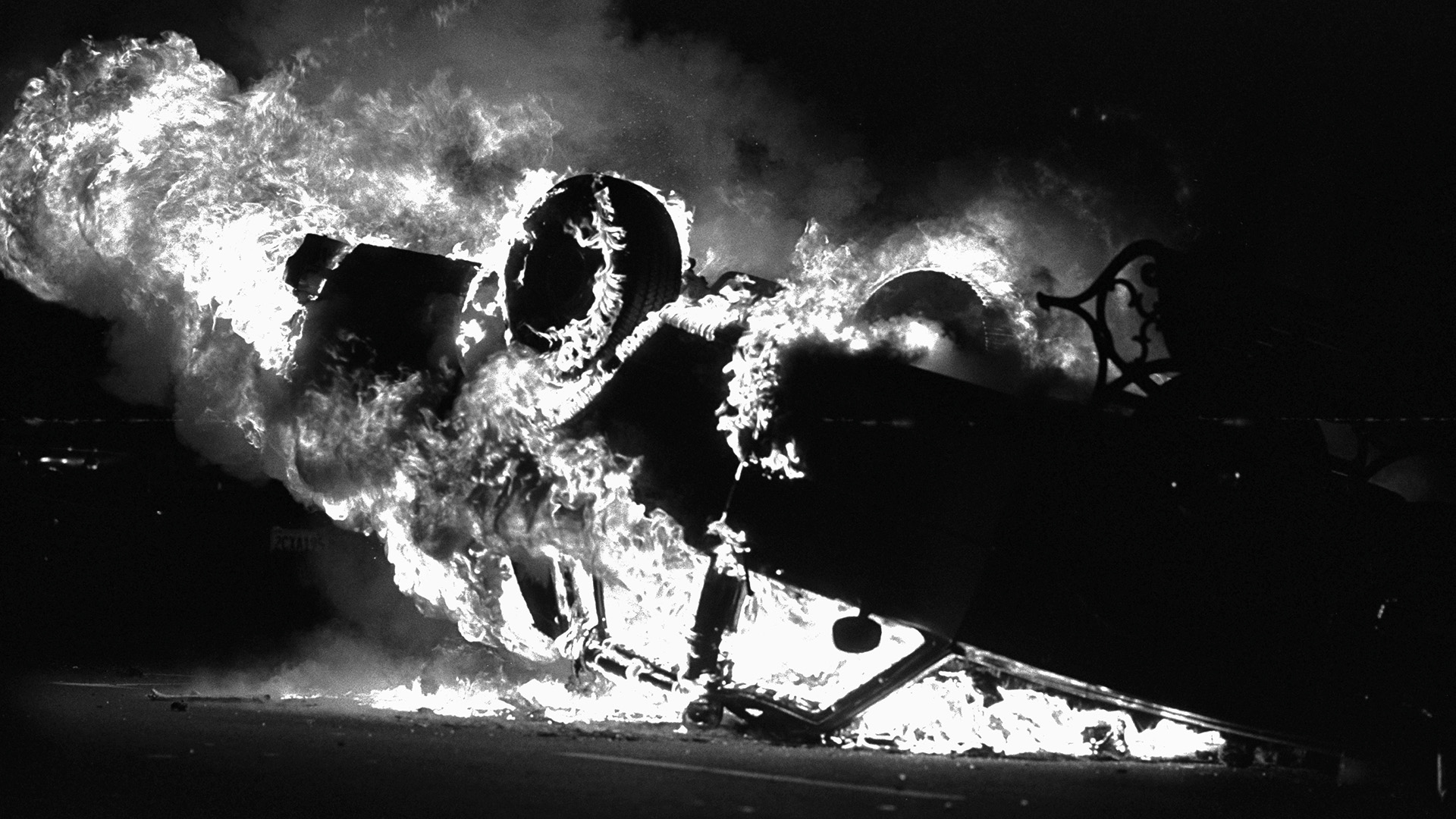The script rarely changes. It calls for lead actors—at least one cop (white) and one other person (black; unarmed), as well as an alleged threat—often loose and improbable—followed by a shocking escalation of violence. All of this should be shot on shaky video footage. This script is now practically formal, inevitable, and we tend to associate it with the spread of camera phones. But the script is much older than that.
Recent years have seen a number of instances of police violence against black Americans that shook the country after they were filmed and zapped to the world. Eric Garner, Walter Scott, Dajerria Becton, Alton Sterling, and Philando Castile are just a handful of the many black Americans whose recorded brutal encounters with law enforcement have galvanized activists of the Black Lives Matter era. Yet in order to vanquish the demons of today and even tomorrow—increased criminalization, persistent segregation, and the militarization of the police, among other insidious elements that sustain America’s racial hierarchy—it is prudent to revisit history.
The National Geographic Channel’s new documentary, LA 92, directed by Dan Lindsay and T.J. Martin, does exactly that. While the movie focuses on the Los Angeles riots that ripped through the city 25 years ago this month, it begins by rewinding even further, to August of 1965, with harrowing black-and-white clips depicting flaming cars and bloodied bodies in the Watts area of Los Angeles. It was there, over 50 years ago, that a white cop arrested a black motorist, a run-in that quickly turned into a fight and sparked almost a full week of arson and looting. “So serious and so explosive is the situation,” says CBS News correspondent Bill Stout, reading, in newsreel footage, a report from the McCone Commission, which investigated the unrest in Watts, “that, unless it is checked, the August riots may [seem by comparison to] be only a curtain-raiser for what could blow up one day in the future.”
That future would finally arrive around three decades later.
On March 3rd, 1991, Rodney King, a 25-year-old black cab driver, was pulled over for speeding. A bystander filmed King as a group of Los Angeles policemen struck him some 50 times. Four of the officers seen beating King in the now-infamous video were charged with having used excessive force and tried; all four were initially acquitted by a mostly white jury. Then, not even two weeks after King’s beating, and in the same city, Soon Ja Du, a store owner from South Korea, fatally shot 15-year-old black teenager Latasha Harlins. While Du was found guilty of voluntary manslaughter, her sentence was ultimately reduced to a fine and community service, and she served no jail time. The movie maps out for viewers the link between these two incidents and the riots that would eventually blitz Los Angeles and set it on fire.
What LA 92 does so well is to illustrate the cyclical nature of racial violence. The movie exposes how the authorities’ tendency to downplay inequality as “not about race” serves only to fuel the machinery of systemic racism and its often-violent outcomes. Take a clip where we see former President George H.W. Bush assert with blithe unawareness—or just willful ignorance—that the Los Angeles riots weren’t about civil rights, but rather about the “brutality of a mob, pure and simple.” But racial politics is hardly as clear-cut as Bush wanted us to believe, and we’ve long seen that individual white people can become unwitting agents of oppression, supporting a system of brutality by ignoring it or claiming neutrality when, in so many American institutions, racism is a default setting.

How can black Americans take some degree of power back? LA 92 suggests, on the one hand, that technology might provide a partial answer. After all, the recording of police officers’ atrocious treatment of King brought larger awareness of wanton police violence, shifting our ideas of how people can engage with racial injustice. When someone sees video footage of a police officer gunning down a black citizen, the thinking goes, it ought to become easier to hold power to account. “[This] is not an isolated incident,” declares Ramona Ripston, former executive director of the Southern California chapter of the American Civil Liberties Union, speaking in the movie. “The difference this time is that we have the proof.”
Still, technology, at least on its own, isn’t a panacea, as the movie makes plain. If it were, it’s likely there wouldn’t be such entrenched rejection of claims of police brutality—or perpetuation of the harmful myth of intrinsic black criminality—even in the face of this proof. And that, perhaps, is exactly the directors’ point: Over the course of nearly two hours of newsreel clips, helicopter footage, and still images layered with audio-only snippets of interviews from the riots, the movie never lets viewers believe that justice will come easily. Certainly, technology can be a powerful tool for cultivating inclusiveness, and this consciousness is key to confronting racism. But it’s only one step on the path to reckoning with America’s darkest sins—and can’t save us from the pressing need to investigate, rigorously, our deeper national and institutional failures.
LA 92 is an urgent social document, a naked look at the past but also at the present and the future. Perhaps the most striking thing about the movie is its fraught open-endedness. It leaves viewers right where we started, amid the social misery, and anger that made violence flash and flair in Watts more than 50 years ago. The script, the movie suggests, doesn’t have to be like this, not if we’re willing to do the one thing with history we never do: learn from it.



